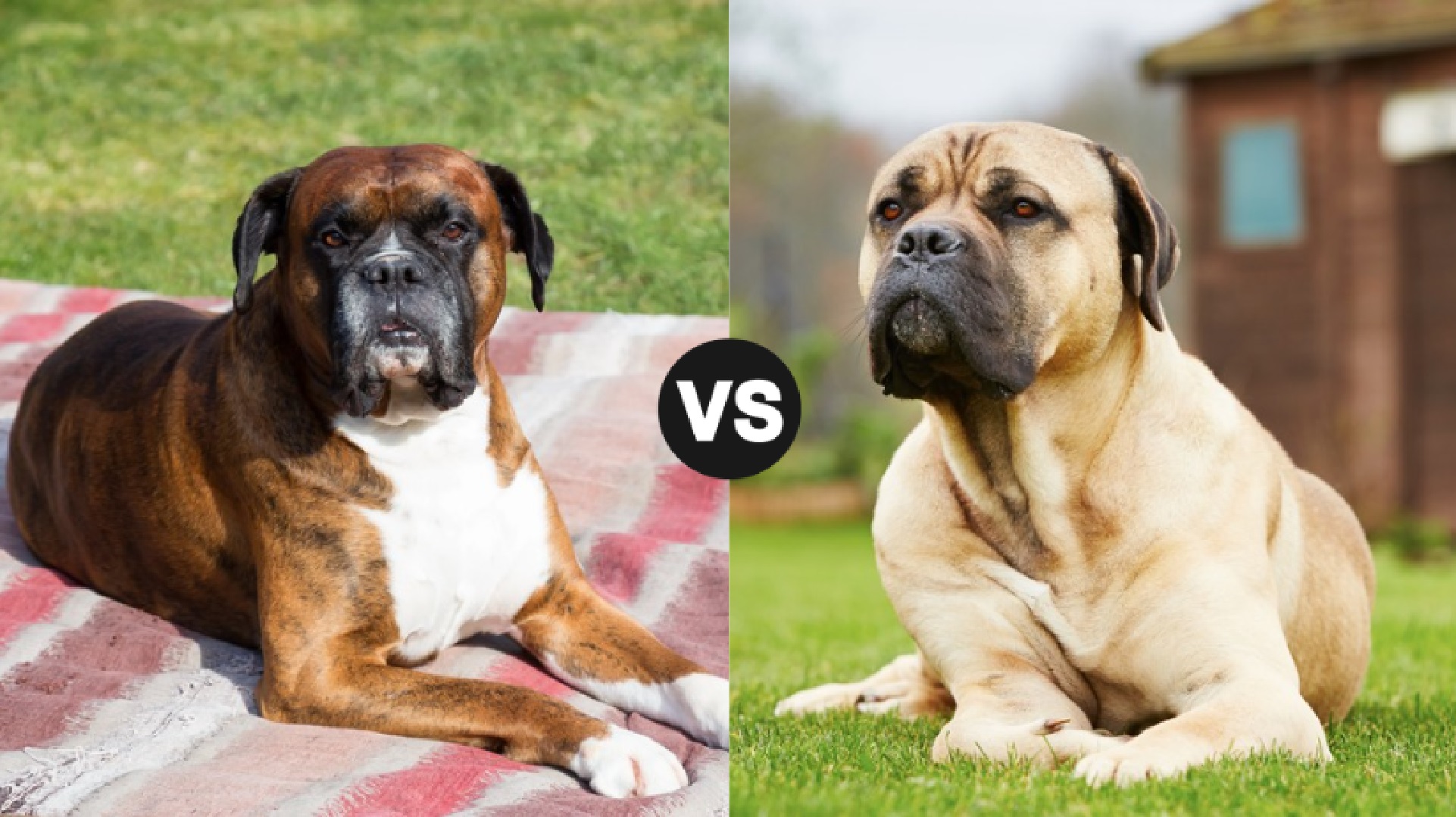When it comes to choosing between two powerful and loyal canine companions, the Boxer and the Bullmastiff are top contenders. Both breeds boast impressive strength, unwavering devotion, and a natural instinct to protect, but they bring very different energy to the table.
The Boxer is a high-spirited athlete known for its playful, bouncy personality, while the Bullmastiff is a calm, confident guardian with a gentle heart. In this head-to-head comparison, we’ll break down their temperaments, physical traits, training needs, and ideal lifestyles to help you decide which of these formidable yet affectionate breeds is the best fit for your home.
Boxer vs. Bullmastiff
Boxers are medium-large dogs that are approximately 21-25 inches tall and weigh around 70 pounds. Their short, smooth coats in fawn or brindle tones are offset by a muscular build that radiates both strength and athleticism.
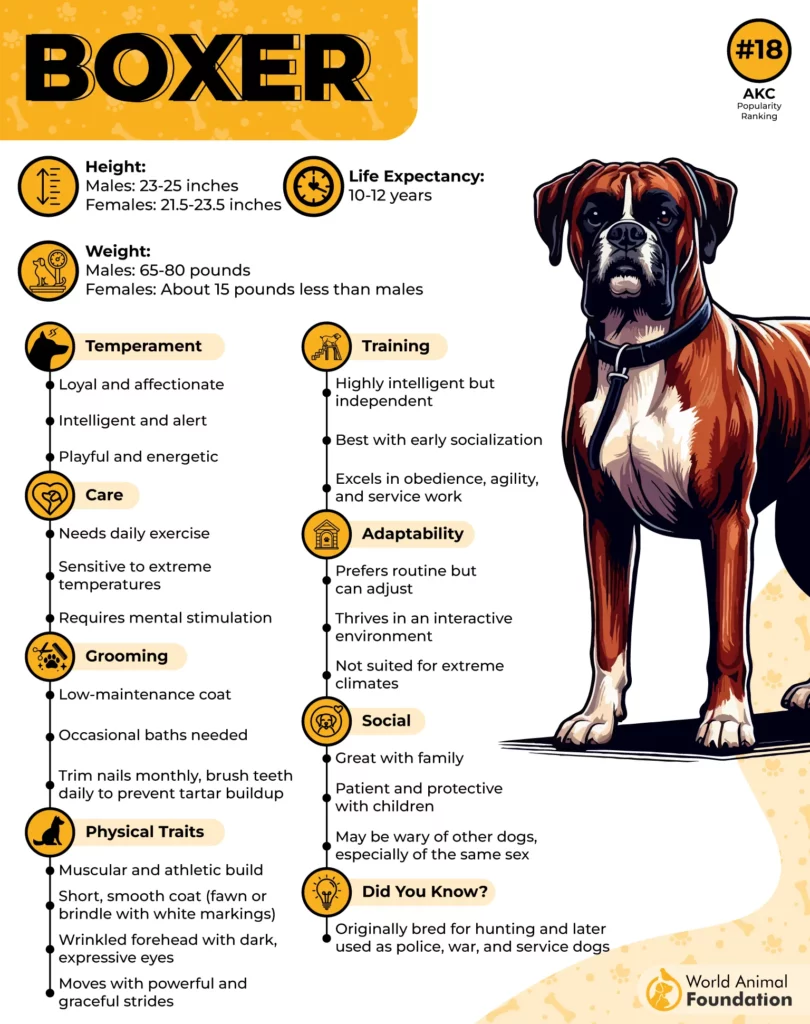
Known for an energetic, playful nature, Boxers are the life of the household, as the American Kennel Club mentions. They love to run, play fetch, and even dance their quirky kidney bean wiggle when they are excited.
These dogs thrive on daily exercises, including two 30-minute walks or vigorous play sessions to help them channel their intelligence and jolly spirit. If you want a smart, affectionate, and energetic friend who keeps life lively, the Boxers deliver, though you should be ready for entertaining them and giving them space to do plenty of training. Purina says they are full of positive energy.
Bullmastiffs are large, powerful dogs, typically measuring 24-27 inches in height and weighing around 100-130 pounds. Their short, weather-resistant coat comes in fawn, red, or brindle, usually with a dark muzzle.
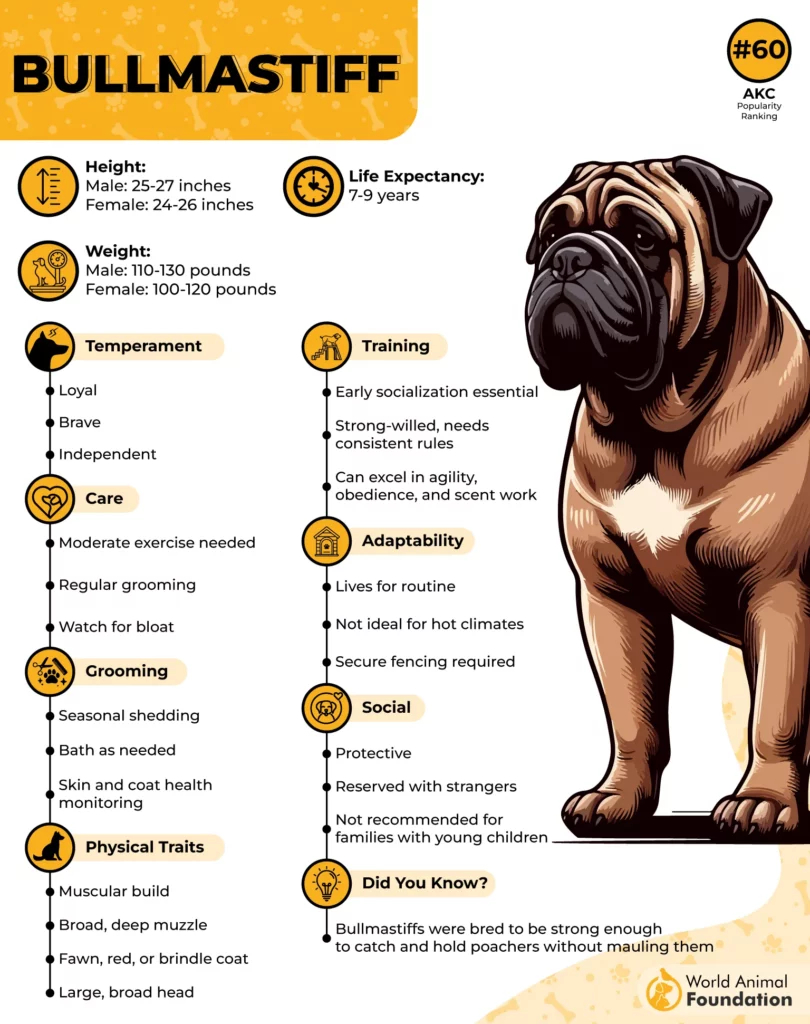
Calm and gentle by nature, Bullmastiffs were originally bred in 19th-century England to guard estates, combining the Mastiff’s size with the Bulldog’s courage. Their nature is steady and protective, yet not very aggressive; they have a quiet confidence that makes families feel safe.
If you are searching for a gentle giant that offers protection, calm companionship, and loyalty, and you have enough space, Bullmastiffs are your best choice.
Size and Weight Differences Between Boxer and Bullmastiff
Boxers are medium-sized athletes, lean, sculpted, and built for movement. Males weigh around 65 to 80 pounds with a height of almost 25 inches. Females tend to be smaller, with a weight of around 50-65 pounds. Their compact yet muscular frame allows them to sprint, leap, and play very easily.
Moving to Bullmastiff, everything scales up. These giants weigh between 100-130 pounds for males and 90-120 pounds for females. Their height ranges from 24-27 inches, and every inch is packed with dense muscle and bone.
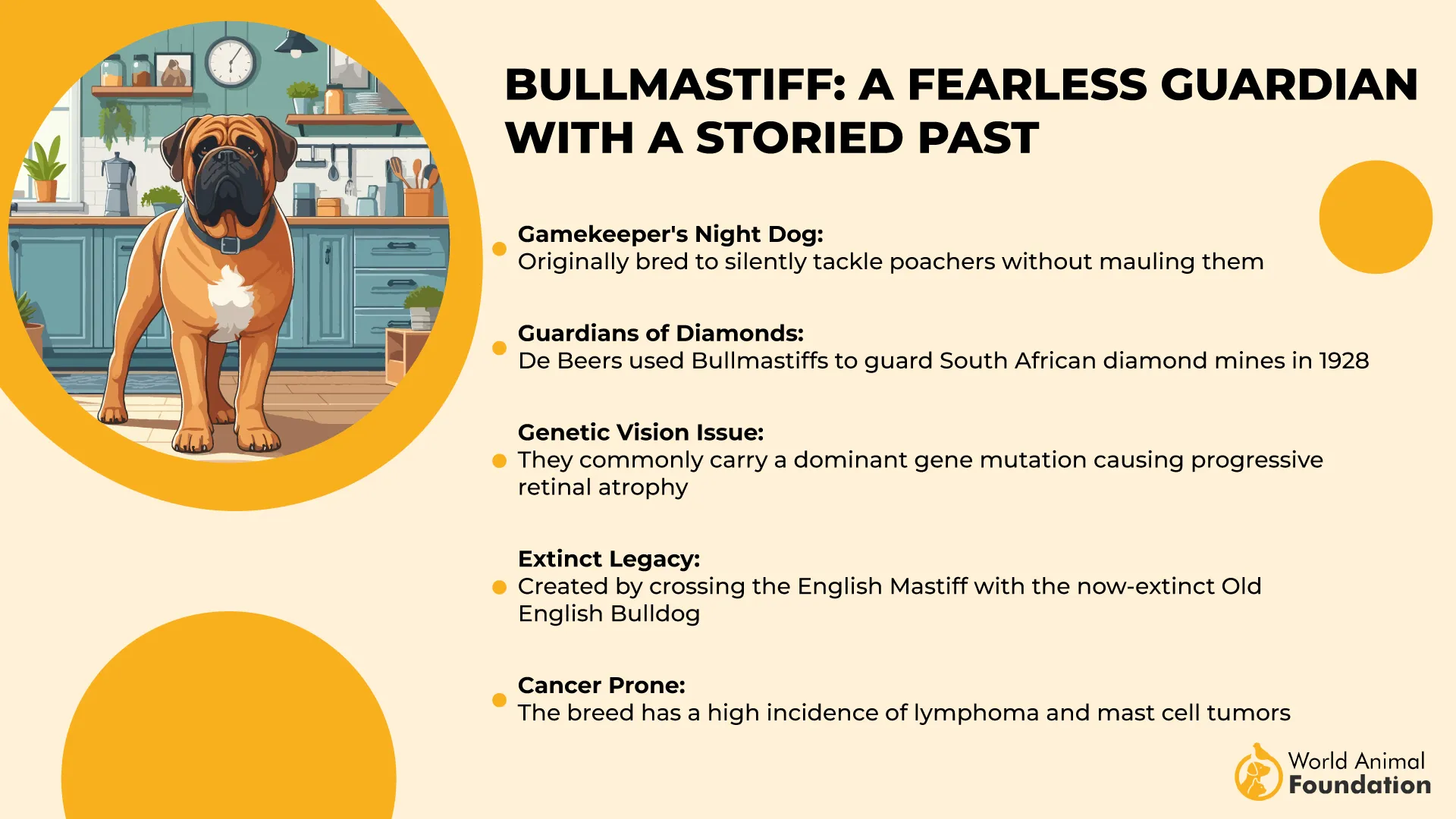
Originally bred to pin down poachers without biting, Bullmastiffs needed that massive frame. If you are looking for a big dog that feels manageable on walks, Boxers offer that balance. If you want a dog whose presence deters unwanted guests, the Bullmastiff is one.
Comparing Trainability and Intelligence: Boxer vs. Bullmastiff
Boxers are sharp and eager learners with good energy for understanding commands and mastering tricks. Their working dog heritage means they thrive on clear and consistent training when paired with positive reinforcement. This makes Boxers ideal companions for families and first-time dog owners who enjoy interactive bonding sessions with their dogs and love to play with them.

On the flip side, Bullmastiffs have a steady and thoughtful intelligence. They are less driven by endless obedience drills and more responsive to calm and measured direction. A Bullmastiff appreciates structured training, but their independent streak requires gentle patience. Both breeds respond well when you understand how they think.
Personality Traits and Temperament: Boxer vs. Bullmastiff
Boxers wear their hearts on their sleeves. With boundless affection and expressive faces, they crave human attention and thrive in homes where they are seen as part of the family. They tolerate children and other animals well. Sometimes a bit too enthusiastic, so structured interaction and early socialization can help.
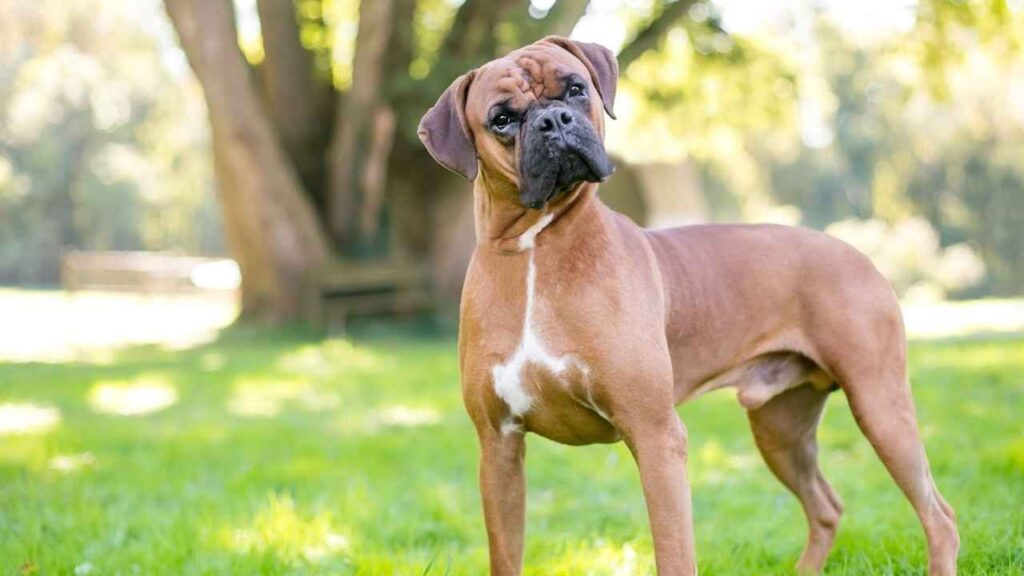
Bullmastiffs, by comparison, are silent protectors. They mix gentleness with watchful calm. Often called gentle giants, they are protective but not overly territorial, making them excellent family dogs. Despite their size, they prefer quiet stability over chaos.
Boxers might bounce excitedly and demand attention, but Bullmastiffs only step in when it’s needed.
Adaptability and Independence Assessment: Boxer vs. Bullmastiff
Boxers are high-energy extroverts who thrive on activity and company. They don’t handle long hours alone and like company. They need play sessions, interactive sessions, and mental stimulation to stay healthy.
However, Bullmastiffs display more independence. They are content with a gentle daily stroll and ample rest time, making them suitable for quieter homes. However, both breeds need consistent companionship; leaving them alone wouldn’t be very suitable.
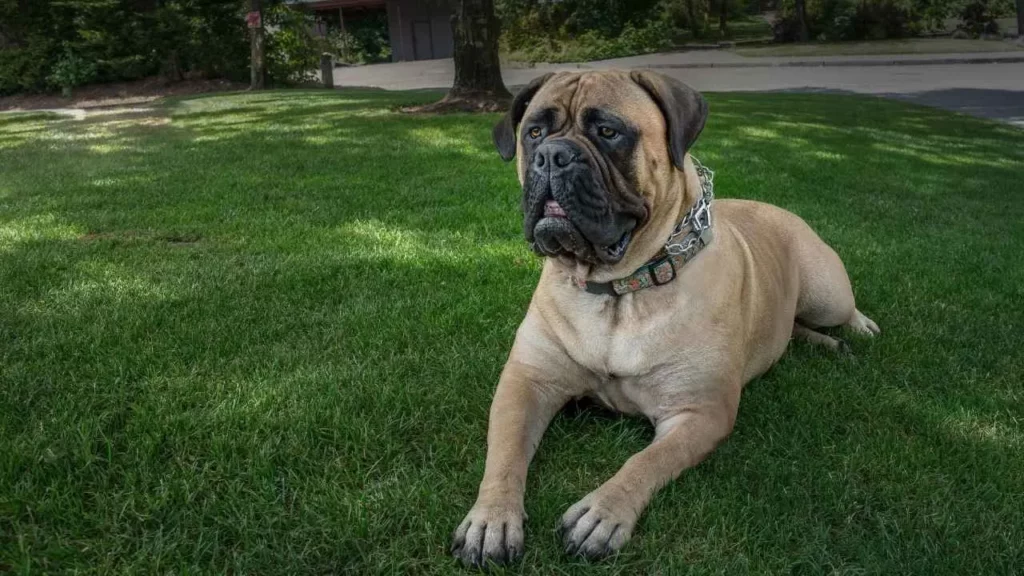
Bite Force and Characteristics: Boxer Compared to Bullmastiff
Boxers pack a surprisingly strong bite; their medium-sized jaws deliver a firm grip. Though it’s often matched by their playful mouthing! Correct training is essential to redirect their natural energy into games and fetching, not chewing.
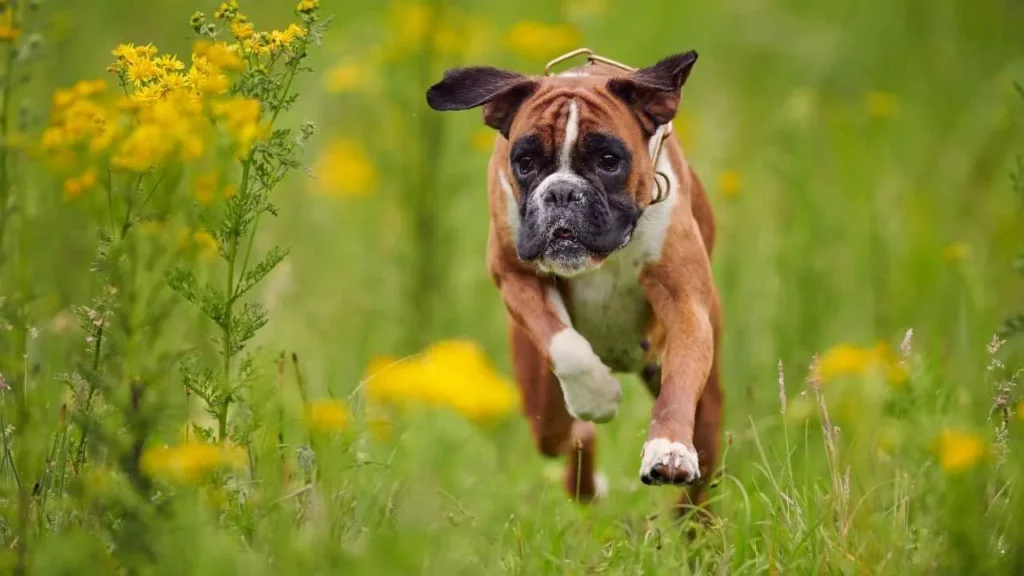
Whereas, Bullmastiffs bring immense power. Their large build and muscular frame grant them both authority and protection instincts, but Bullmastiffs aren’t aggressive by nature.
Health Issues and Expected Lifespan Comparison
When choosing between the Boxer and Bullmastiff, understanding their common health issues is crucial, especially both breeds are vulnerable in different ways. Boxers tend to have a shorter average lifespan, typically around 10-12 years, as PetMD mentions.
They are unfortunately prone to several genetic diseases, including certain cancers like lymphoma, or different heart issues like aortic stenosis, and others. Regular vet checkups, early screening, and responsible breeding practices are non-negotiable for keeping bocers healthy for long.
Bullmastiffs, despite their larger size, often live 7-10 years. Their biggest health issues revolve around their joints and skeletal system. Bloat or gastric torsion is another life-threatening condition they are at risk for due to their deep chests.
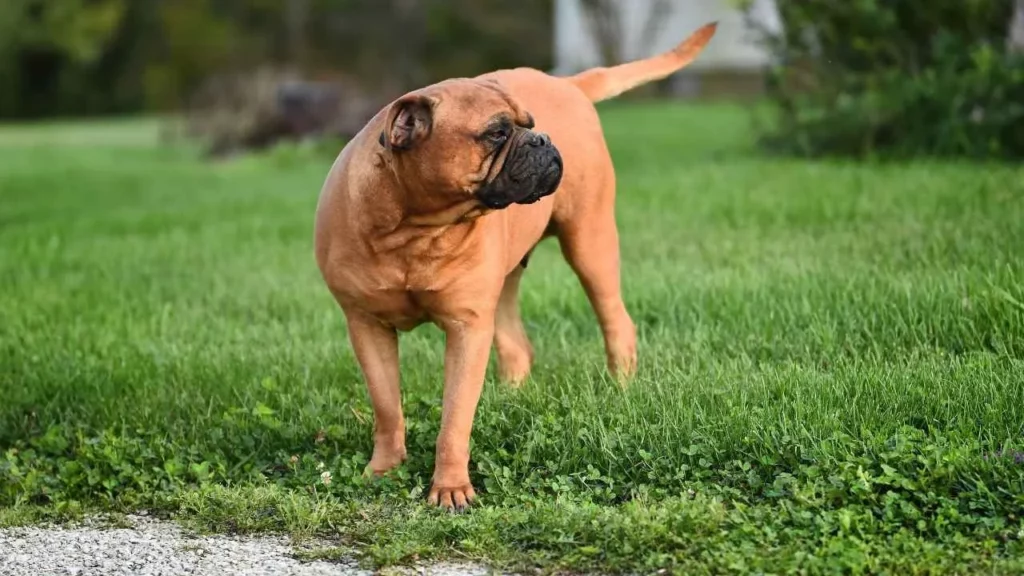
Like many breeds, their hearts and thyroids can pose issues in later years. Both dogs require attentive care and regular wellness visits, as each dog’s health will come down to genetics, diet, and lifestyle at the end.
Nutritional Needs and Weight Management for Boxer vs. Bullmastiff
Boxers benefit from high-protein, moderate-fat food designed for active breeds. Ingredients like real meat, sweet potatoes, and fatty acids. This diet can help maintain their muscle tone and joint health. Despite their energy, Boxers are prone to gas and sensitive stomachs, so choosing wisely is the way to go.

Bullmastiffs are calorie conservers. Their more sedentary lifestyle doesn’t require high energy intake, but their large frame does require high-quality nutrition. They are more prone to obesity, which worsens their risk for joint problems. You should try to give them low-fat formulas and joint support supplements.
Grooming Requirements and Allergy Considerations
Grooming needs are surprisingly manageable for both breeds, but it doesn’t mean that you’ll have to do nothing. Boxers have a short, sleek coat that sheds moderately. Weekly brushing with a rubber grooming tool is usually enough to keep hair under control and skin healthy. Bathing should be less often, as it can strip their natural coat.
Bullmastiffs also sport a short, dense coat, but they shed more heavily during seasonal changes. Their larger size means surface area to clean. Wiping down folds and jowls is also very important.
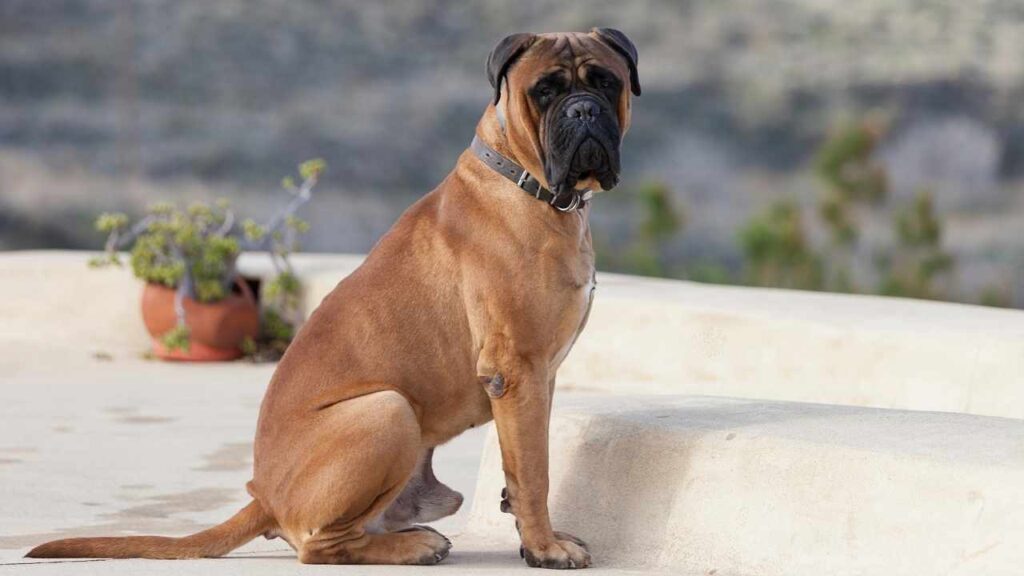
Conclusion
Choosing between the Boxer and Bullmastiff isn’t about which one is better, but more about what matches your lifestyle.
Both breeds offer deep loyalty and affection. Your decision should come from your lifestyle, home space, and your emotional connection to the breed. Either way, you are not just getting a dog, you’re welcoming a best friend with a big personality.


